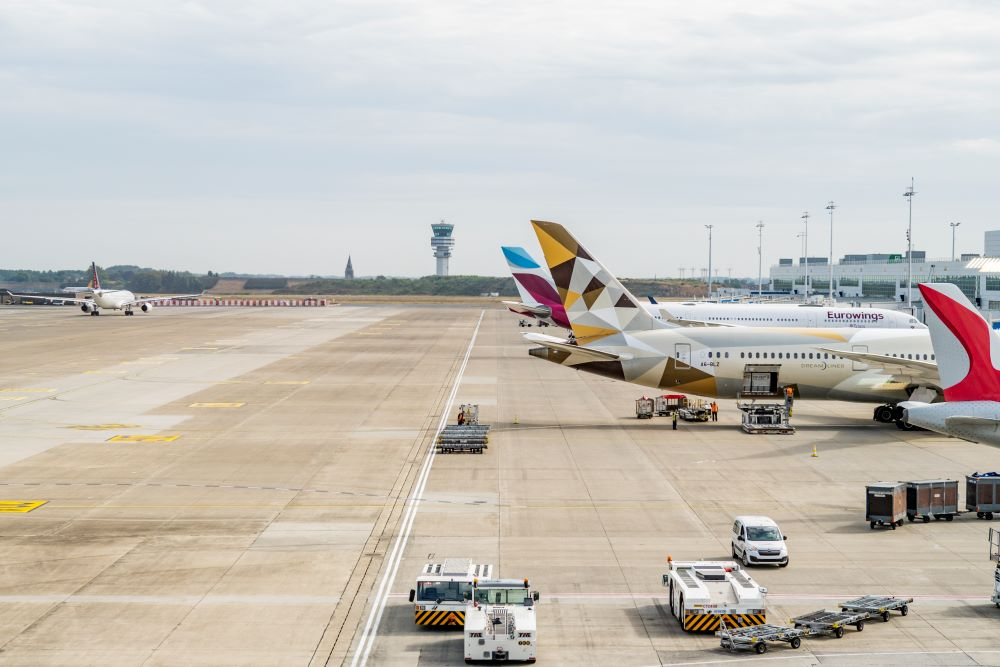In January, cargo volumes at Brussels Airport grew by 4% compared to January 2021 and even by 10% compared to January 2019. The month was particularly busy due to the high demand for air freight. This phenomenon was partly due to the disruption of global cargo supply chains.
Compared to January 2021, growth in freight transport continued mainly in the full cargo segment (+24%), but also in belly cargo (+51%), due to the severe travel restrictions and the resulting decline in passenger flights a year ago.
Integrator services, on the other hand, experienced a 25% decline, after the continued strong growth of recent months. The same goes for trucked air freight, which saw volumes drop by 8% compared to January 2021.
In terms of volumes, Asia remains the most important region, followed by America.
The transport of vaccines to and from Brussels Airport continued. In total, since the start of vaccine shipments in November 2020, 900 million vaccines have been transported, confirming more than ever the role of Brussels Airport as the main European pharmaceutical hub.
During this first month of 2022, Brussels Airport welcomed more than 800,000 passengers, an increase of 183% compared to January 2021, but still down by 52% compared to the same period before the crisis (January 2019). A month that was positively impacted by the Christmas holidays but was also marked by the more stringent sanitary measures in Europe. Cargo continued its growth with a 4% increase in total volumes transported compared to January 2021.
Passenger numbers increased by 183% in 2021.
In January, Brussels Airport welcomed 800,518 passengers, an increase of 183% compared to January 2021 (stringent travel restrictions) and a decrease of 52% compared to the same period before the crisis (January 2019). Passenger numbers in January were positively impacted by the Christmas holidays, with numerous travellers returning from their holidays.
This resulted in a relatively large difference between departing (363,583 passengers) and arriving (436,935 passengers) passengers. The share of departing transfer passengers was 19.5%, 1.5% lower than in 2019, due to the stronger recovery in originating traffic than in transfer traffic.
Passenger numbers were again put under pressure by the worsening epidemiological situation in Europe, the travel restrictions and the testing requirements. The ban on flights to Morocco also had a negative impact on the whole month. Fortunately, this ban was lifted as from the 7th of February.
The top 10 destination countries in January were respectively Spain, Germany, Italy, Portugal, Turkey, France, the US, Switzerland, the United Arab Emirates, and the United Kingdom. Spain, Portugal, and the US did particularly well compared to 2019. The ten most popular destinations were Madrid, Barcelona, Lisbon, Malaga, Tenerife, Dubai, Alicante, Geneva, and Frankfurt. Both Malaga and Tenerife recorded comparable passenger numbers in 2019.
In the coming months, Brussels Airport is preparing to welcome back four airlines that suspended their flights at the start of the Covid-19 pandemic: Delta Air Lines, Air Transat, CSA Czech Airlines, and Ukraine International Airlines.
Flights
The total number of flight movements in January 2022 increased by 86% compared to 2021 and amounted to 10,585 (compared to 17,232 in 2019). The number of passenger flights increased by 149% compared to 2021 but remains at 52% of the number of passenger flights in January 2019, before the crisis. Flight occupancy rates are also at 52% of January 2019 rates. This past January, full cargo flights increased very slightly by 0.9% compared to 2021. The share of cargo flights carried out by passenger aircraft is declining but remains an important additional connectivity option for destinations such as Brazil, China, and Japan.










